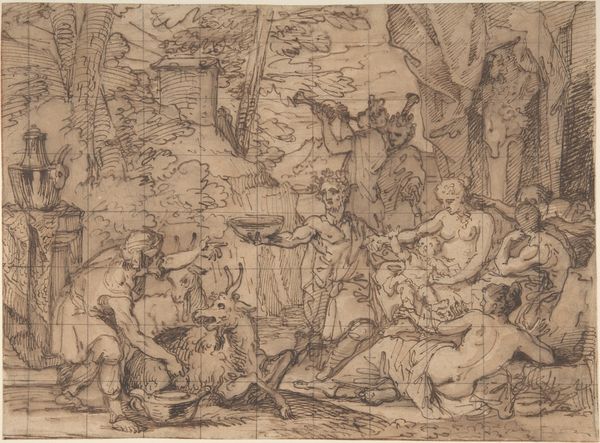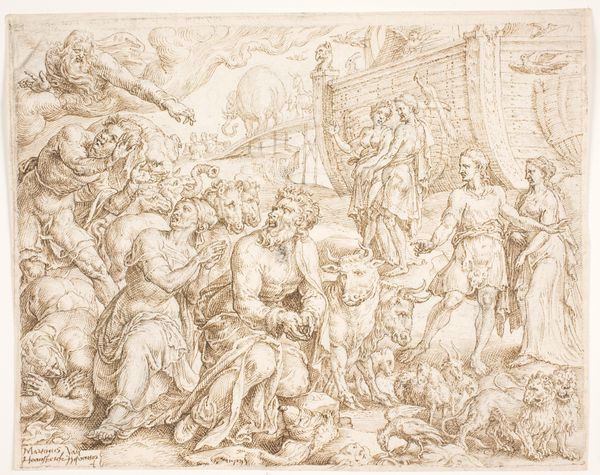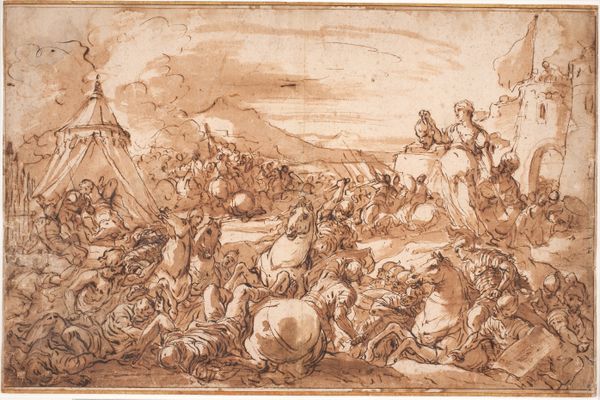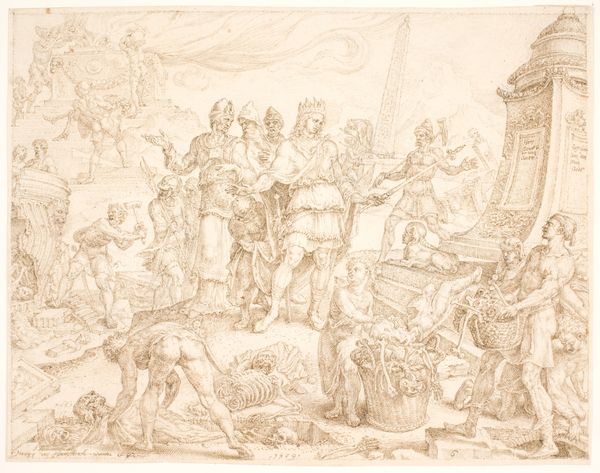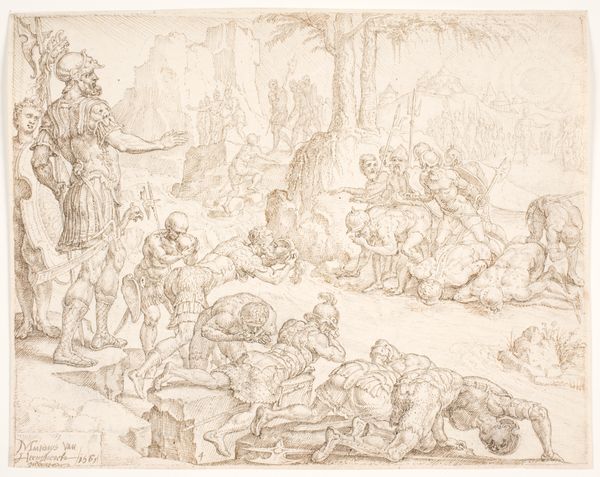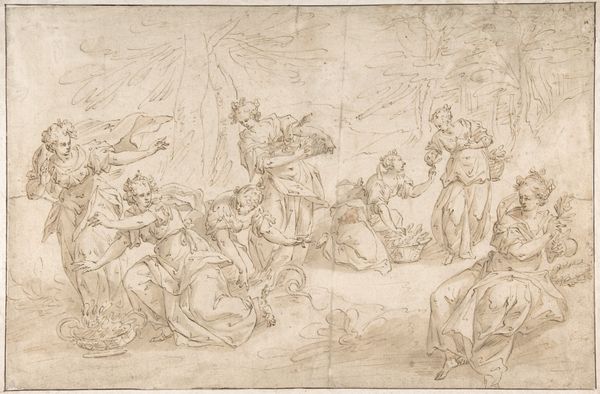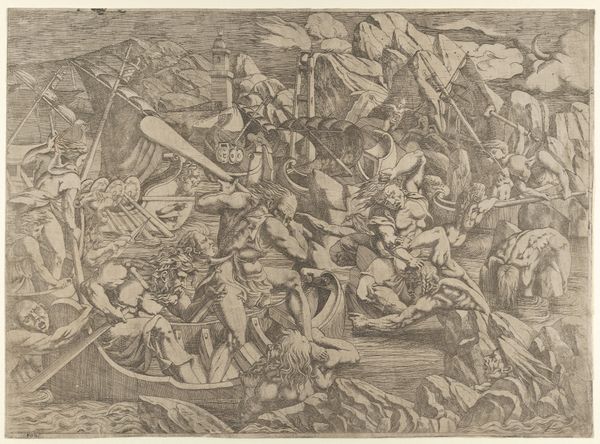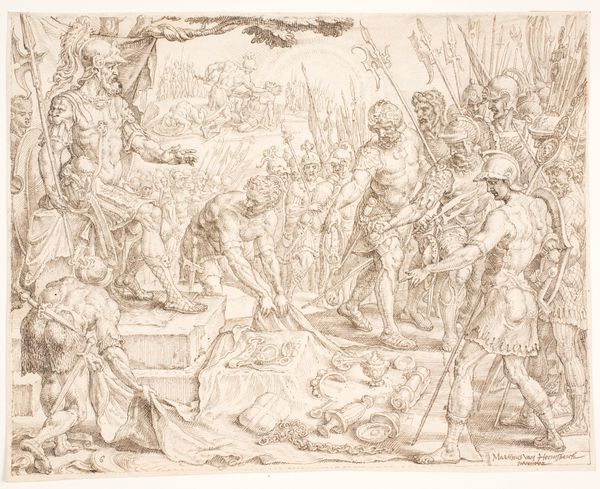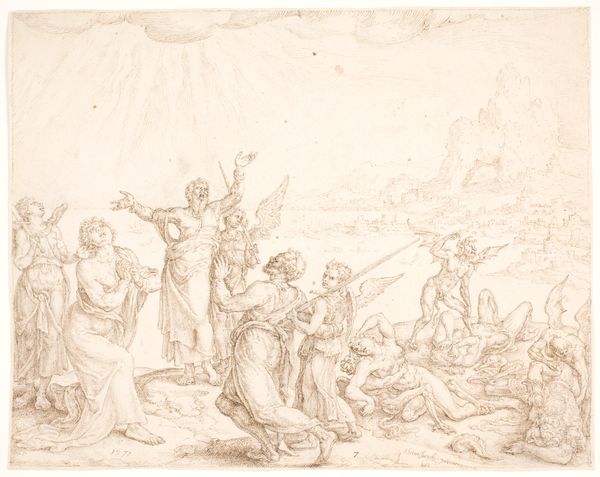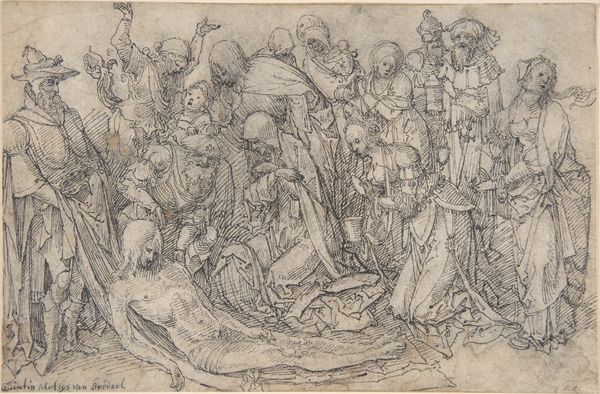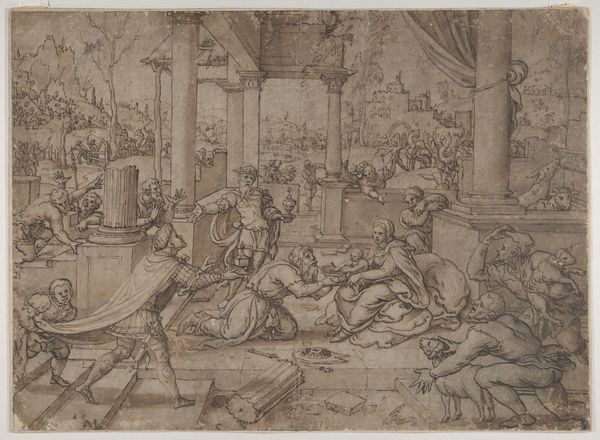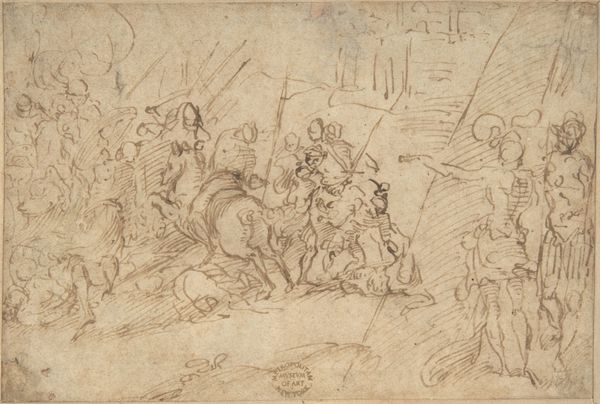
drawing, print, paper, ink
#
drawing
#
ink drawing
#
narrative-art
# print
#
figuration
#
paper
#
ink
#
line
#
genre-painting
#
history-painting
Dimensions: 138 × 198 mm
Copyright: Public Domain
Curator: Oh, what an intense scene! At first glance, there is such dynamic tension in the sheer number of figures packed within the composition, and there's a clear diagonal pull of movement. Editor: Indeed. We are looking at Antonio Maria Viani’s "Battle Scene," an ink drawing on paper. It exemplifies the artist's keen interest in depicting dynamic movement and complex spatial relationships. The materiality of the drawing itself– the quick, repetitive strokes of ink on the thinness of paper–speaks volumes about the production. Curator: Note the choreography of combat. The arrangement of the soldiers and their weapons forms a complex lattice across the plane. See how Viani uses line weight to bring figures forward and recede. The formal aspects work beautifully to convey a scene filled with carnage. Editor: Carnage it is! Looking at the materials gives me the immediate sense of how accessible battle depictions could be circulated. This wasn’t some massive oil painting commissioned by the elite. An ink drawing is relatively inexpensive, reproducible, and thus democratic, and perhaps even speaks to how war impacts everyday life. Curator: Absolutely. The interplay between light and shadow across the figures heightens the drama. Take, for instance, the focal point of the rider and the fallen soldier directly below his horse. Editor: From a materialist perspective, I consider the labor that goes into this depiction. It speaks to the endless human cycle of warfare and of repetitive gestures of drawing that can produce it on the cheap and keep replicating scenes of conflict for broader consumption. Curator: A valid observation. I would argue though, that Viani elevated the very act of reproduction itself through his skill. The linear intricacy alone transforms mere 'illustration' into something more rarefied. Editor: Agreed. But doesn’t knowing of this labor influence how we interpret these grand historical narratives? Curator: Of course. Examining how narratives take shape across materiality gives us deeper appreciation of the drawing and culture of its moment. Editor: A compelling image indeed, to appreciate Viani's craftsmanship and broader historical and social issues.
Comments
No comments
Be the first to comment and join the conversation on the ultimate creative platform.
